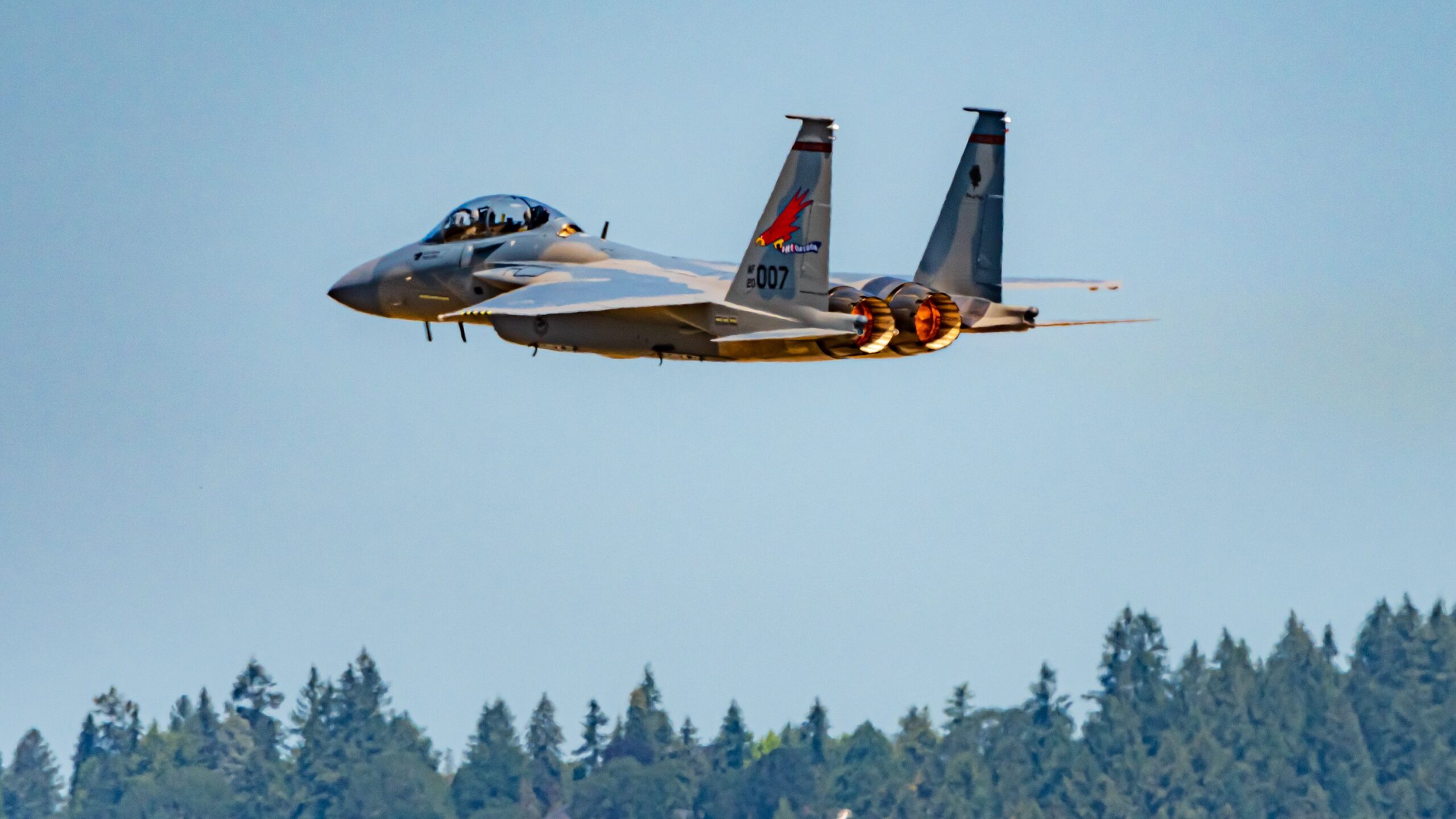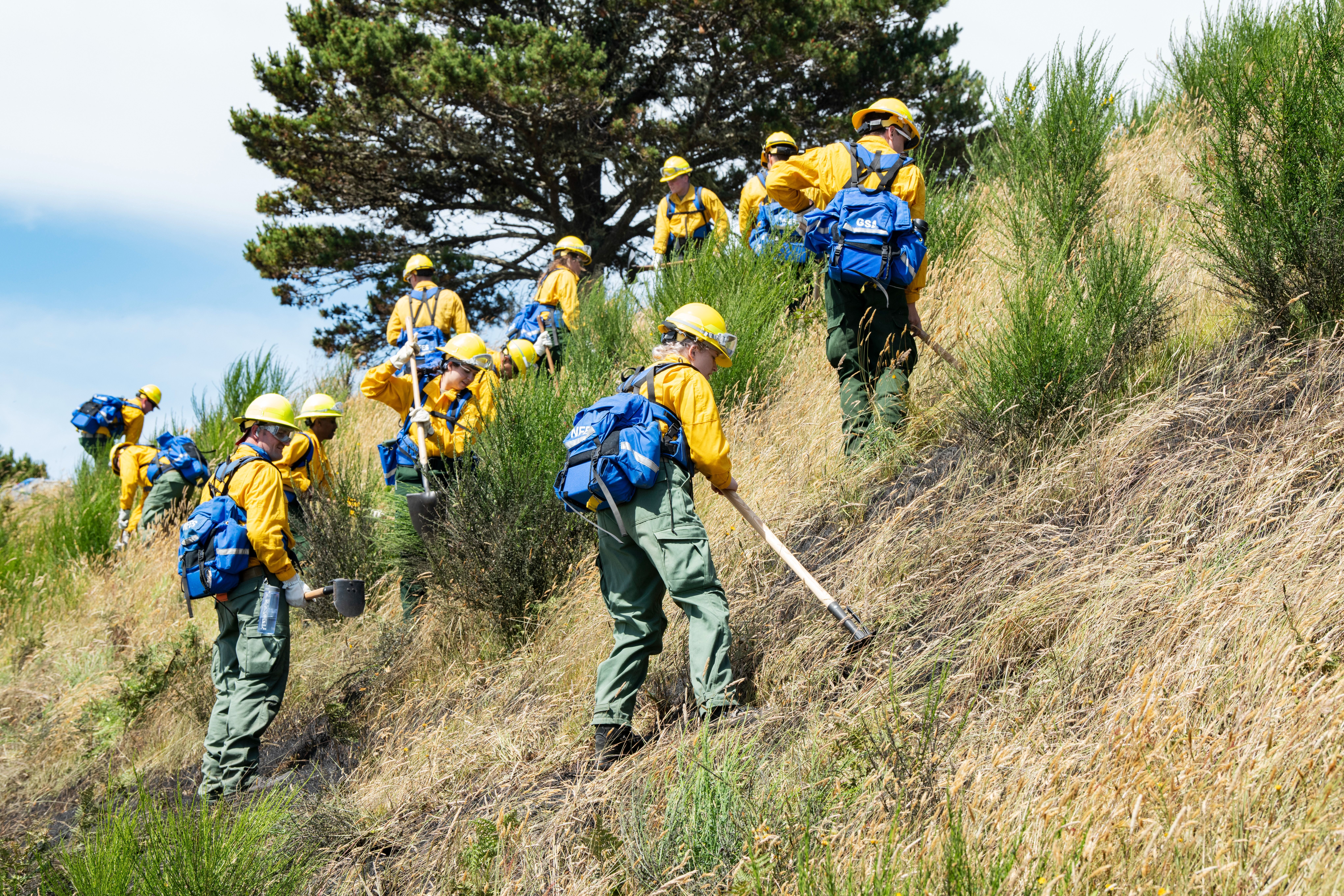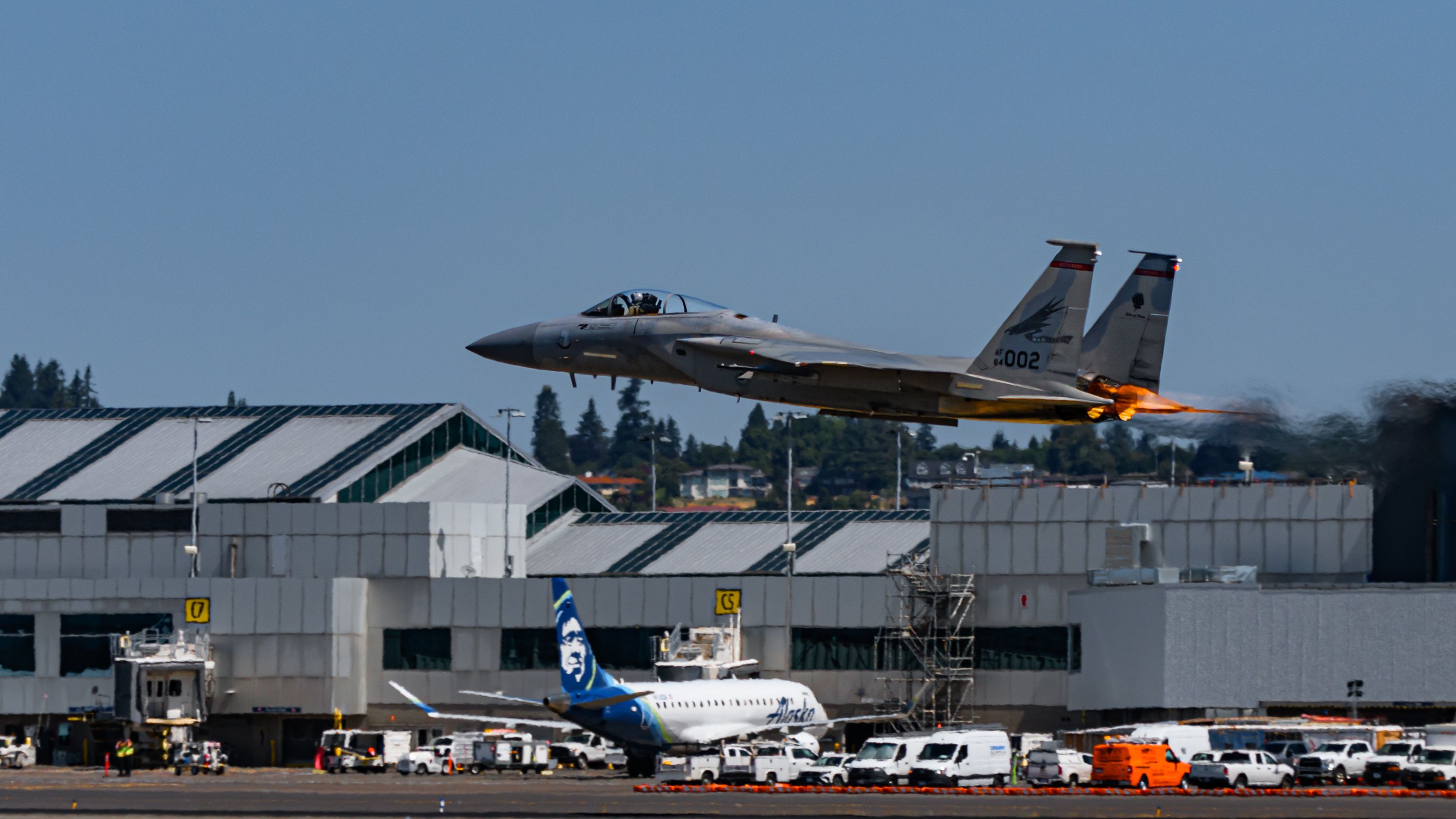Summary
- Operation Noble Eagle continues to enhance US air defense post-9/11, with F-15s serving as visual and weapons platforms.
- The 142nd Wing ensures safety for the Pacific Northwest, also aiding Oregon with COVID-19, fires, and healthcare.
- Integration of F-15EXs into the 142nd Wing adds advanced capabilities but poses maintenance challenges.
On September 10, Simple Flying spoke with Oregon Air National Guard 142nd Wing Commander Colonel Michael Kosderka about the leadership of Operation Noble Eagle, the changing state of the Air National Guard, and the current status of the F-15EX Eagle.
Implementing Operation Noble Eagle 23 years on
23 years ago, the United States of America was suddenly attacked by four terrorist hijackings, leading to all four jetliners being destroyed, the destruction of New York City’s World Trade Center, and significant damage to the Pentagon. In direct response to the violation of air sovereignty and the resulting loss of life, Operation Noble Eagle began. That day, according to a September 11, 2011 historical statement, the 142nd Wing issued a full recall, increased its alert posture at 6:30 AM local time, complete with alert klaxons, and finally had to scramble at 12:15 pm to escort an Air China 747 with communication problems to Vancouver International Airport as a precaution.
The bottom line of Operation Noble Eagle as Colonel Kosderka shared with Simple Flying is,
“Honestly, if we can keep it so that folks sort of we’re out of sight, out of mind, because they’re not scared, they’re not worried about it, that we’re doing our job, because we’re convincing the bad guys that it’s not worth it to try to mess with the United States of America. But that said I don’t think anybody has forgotten about 9/11. … I know that we do an important job to keep everybody safe.”
Part of keeping everybody safe is using the F-15s on hand as visual platforms to report back on aircraft acting abnormally, such as aircraft that have lost radio communications or have an unruly passenger situation onboard or might have a pilot who did not read the latest notice to air missions (aka NOTAM, notice to airmen) about temporary airspace restrictions. In any event, the F-15s provide information that a radar blip on a screen cannot. The F-15s can always go tactical and employ weapons, but that decision is ultimately made by the President or their designee – such as the Secretary of Defense.
To Colonel Kosderka, it’s “Our number one priority.” Even if and when the 142nd Fighter Wing is called out to deploy, sufficient F-15s will sit alert for emergency air defenses for the Pacific Northwest.
However, as Colonel Kosderka shared, air defense is “half the job.” The other half of the 142nd Wing’s job is to provide defense support to the State of Oregon and, when necessary, the United States of America.
Defending the United States and State of Oregon full-time
One should also remember during the COVID-19 pandemic, for Oregonians, it was the Oregon Air National Guard that helped distribute vaccines and provide support staff to the state’s hospitals. Another task in support of the State of Oregon’s defense has been helping fight wildfires – after being trained on how.
Photo: Master Sgt. John Hughel | US Air Force
What? A Wing oriented towards flying fighter planes fighting forest fires and helping hospitals also? To Colonel Kosderka, it’s about,
“We get to wear two hats, and it’s really great because we get to serve our local community. We get to serve the federal government.”
One can read a guide into the generalities of the US Air Force’s Air National Guard.
With that, the Wing is 40-50% full-time personnel, the rest part-time. Not exactly a “flying club” or “weekend warriors” anymore but servicemembers with a significant commitment that has included deployments to Europe. Of course, there is the 24-7-52 alert responsibility to fulfill also.
Photo: Joe Kunzler | Simple Flying
For as Colonel Kosderka made clear,
“We wear the same uniform, we fly the same tactics, but same airplane. That’s why it’s very important… the guard is recapitalized concurrently and proportionately with the active duty.”
In fact, the 142nd Wing is the first Air National Guard to receive fresh combat aircraft from the factory in the Air National Guard’s history.
Integrating F-15EXs Into the 142nd Wing
Colonel Kosderka also kindly shared an update with Simple Flying on integrating F-15EXs into the 142nd Wing. Simple Flying previously reported on the delivery of the first two F-15EXs:
The first two will be joined by 12 more starting in January, so the 142nd Wing will have 14 F-15EXs on hand by September 2025. However, Kadena Air Base in Japan is slated to receive two squadrons worth of F-15EXs as per a July 3 Department of Defense statement for a total of 36. This could delay by two years the 142nd Wing receiving their last four F-15EXs.
The F-15EXs of today versus the F-15Cs of the 1980s are “A brand new airplane” and “essentially a digital platform” that “looks like an Eagle, smells like an Eagle,” as Colonel Kosderka explained. However, the previously profiled upshifts in capability are held back by the lack of funding for conformal fuel tanks like the Strike Eagle family has. Until then, the F-15EXs on hand are enhanced replacements for the F-15Cs with better avionics like a new helmet-mounted sight.
However, the F-15EXs create learning opportunities for maintenance. It helps that, as Colonel Kosderka, a former maintenance squadron commander, kindly shared with Simple Flying – the F-15EX is 60% Strike Eagle, which is a “very different” version of the F-15C Eagle to maintain. As per the below, it appears the Wing is learning well:
Bottom line: “America doesn’t deploy until the guard deploys”
Colonel Kosderka also acknowledged those deployments create hardships for the communities left behind. But the focus should be on the benefits of having community members in the Guard – especially with over half of the 142nd Wing also having civilian employment. Benefits such as skills training, leadership experience and being a loyal employee when in a civilian job also.
But ultimately, as Colonel Kosderka explained to Simple Flying,
“People will say that America doesn’t deploy until the guard deploys because when we deploy, whether it’s to the hospitals, the firefighting, to Europe or wherever people within the community are then deployed.
…
“We’re going to be fighting our wars, and we’re going to be protecting the homeland. … So just don’t forget about the things that we do in the community. And when you see someone that has to deploy, cheer them on, support them on, and when they come back, they will be even stronger for it.”



